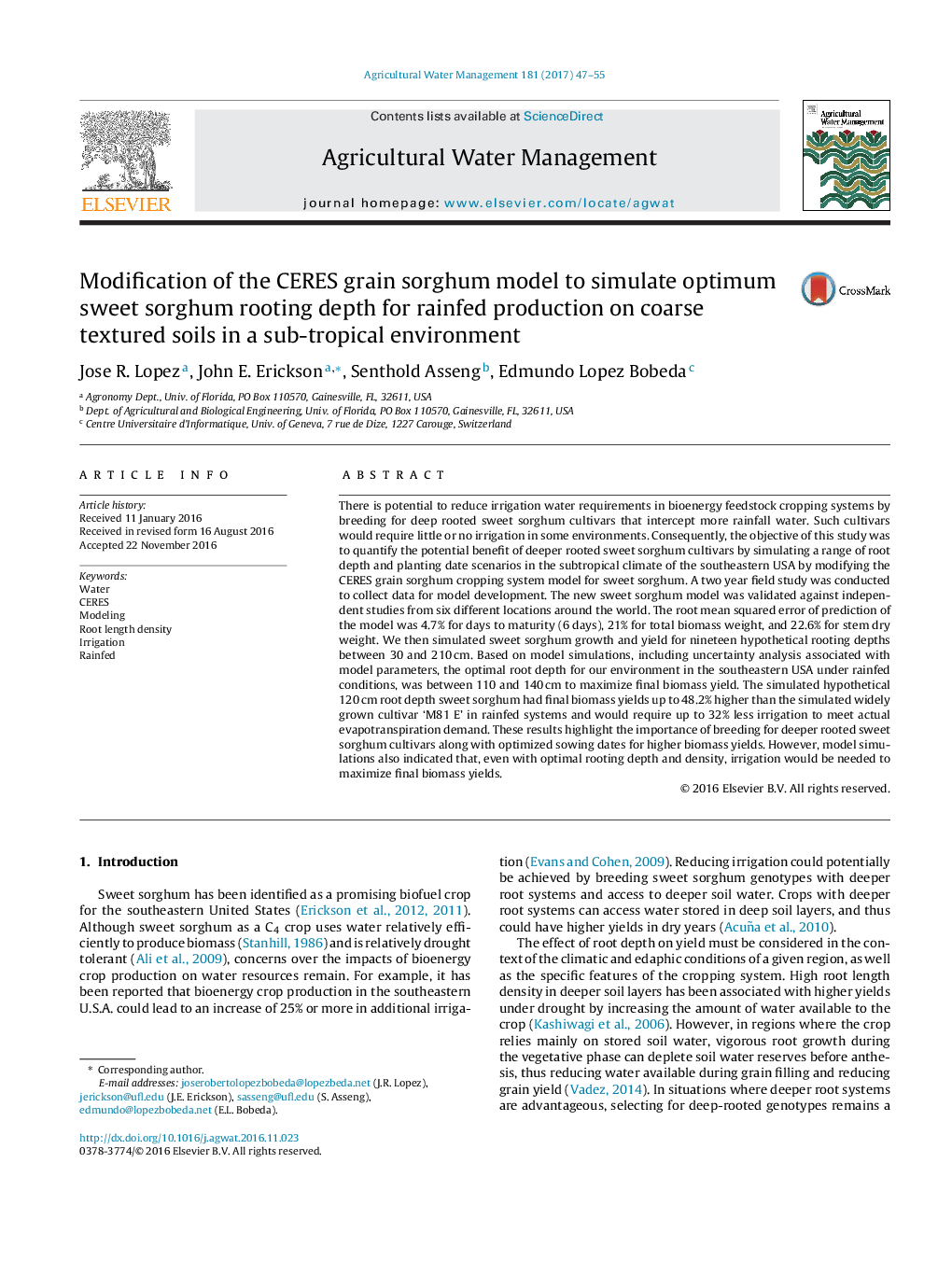| کد مقاله | کد نشریه | سال انتشار | مقاله انگلیسی | نسخه تمام متن |
|---|---|---|---|---|
| 5758573 | 1622899 | 2017 | 9 صفحه PDF | دانلود رایگان |
عنوان انگلیسی مقاله ISI
Modification of the CERES grain sorghum model to simulate optimum sweet sorghum rooting depth for rainfed production on coarse textured soils in a sub-tropical environment
دانلود مقاله + سفارش ترجمه
دانلود مقاله ISI انگلیسی
رایگان برای ایرانیان
کلمات کلیدی
موضوعات مرتبط
علوم زیستی و بیوفناوری
علوم کشاورزی و بیولوژیک
علوم زراعت و اصلاح نباتات
پیش نمایش صفحه اول مقاله

چکیده انگلیسی
There is potential to reduce irrigation water requirements in bioenergy feedstock cropping systems by breeding for deep rooted sweet sorghum cultivars that intercept more rainfall water. Such cultivars would require little or no irrigation in some environments. Consequently, the objective of this study was to quantify the potential benefit of deeper rooted sweet sorghum cultivars by simulating a range of root depth and planting date scenarios in the subtropical climate of the southeastern USA by modifying the CERES grain sorghum cropping system model for sweet sorghum. A two year field study was conducted to collect data for model development. The new sweet sorghum model was validated against independent studies from six different locations around the world. The root mean squared error of prediction of the model was 4.7% for days to maturity (6 days), 21% for total biomass weight, and 22.6% for stem dry weight. We then simulated sweet sorghum growth and yield for nineteen hypothetical rooting depths between 30 and 210Â cm. Based on model simulations, including uncertainty analysis associated with model parameters, the optimal root depth for our environment in the southeastern USA under rainfed conditions, was between 110 and 140Â cm to maximize final biomass yield. The simulated hypothetical 120Â cm root depth sweet sorghum had final biomass yields up to 48.2% higher than the simulated widely grown cultivar 'M81 E' in rainfed systems and would require up to 32% less irrigation to meet actual evapotranspiration demand. These results highlight the importance of breeding for deeper rooted sweet sorghum cultivars along with optimized sowing dates for higher biomass yields. However, model simulations also indicated that, even with optimal rooting depth and density, irrigation would be needed to maximize final biomass yields.
ناشر
Database: Elsevier - ScienceDirect (ساینس دایرکت)
Journal: Agricultural Water Management - Volume 181, February 2017, Pages 47-55
Journal: Agricultural Water Management - Volume 181, February 2017, Pages 47-55
نویسندگان
Jose R. Lopez, John E. Erickson, Senthold Asseng, Edmundo Lopez Bobeda,